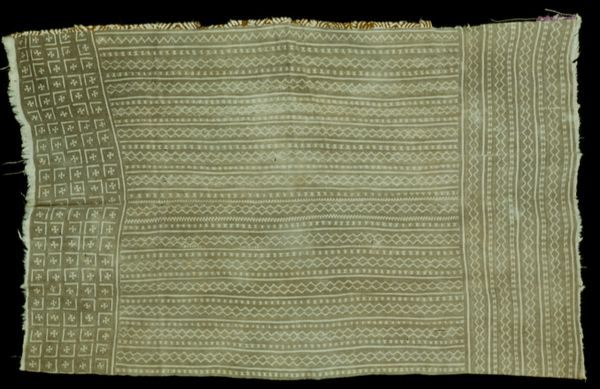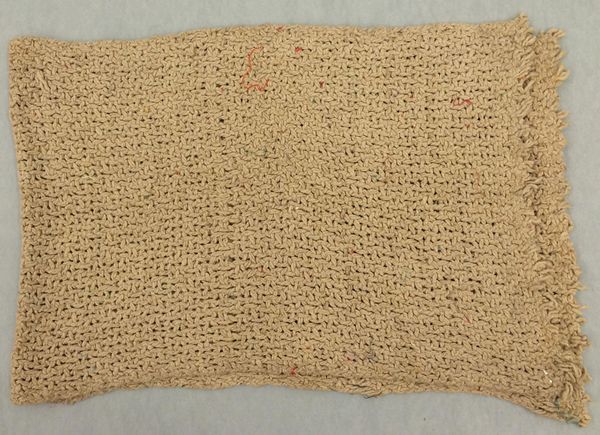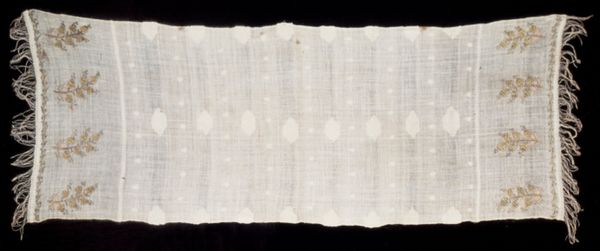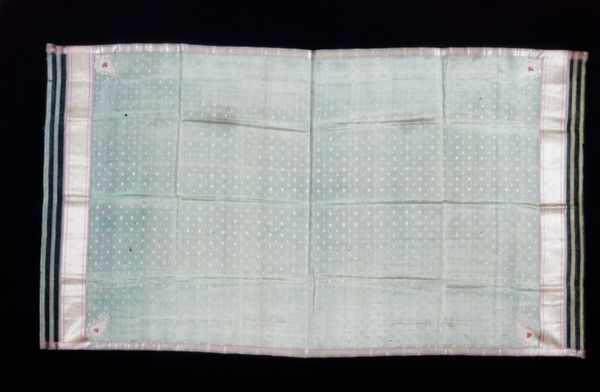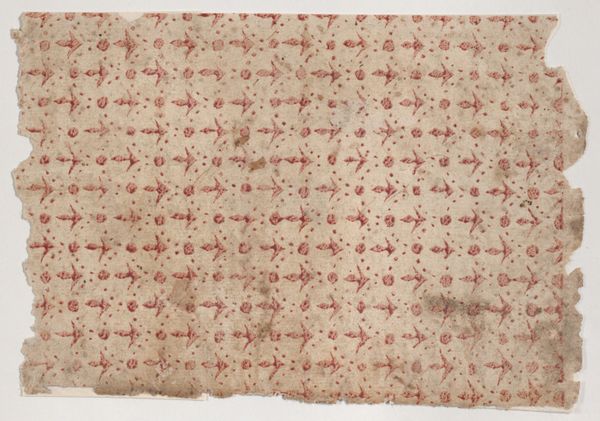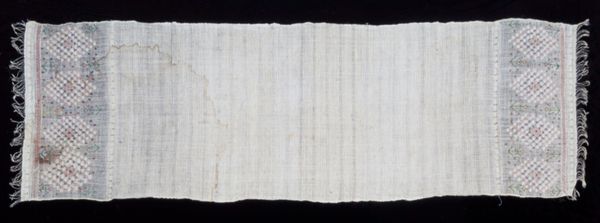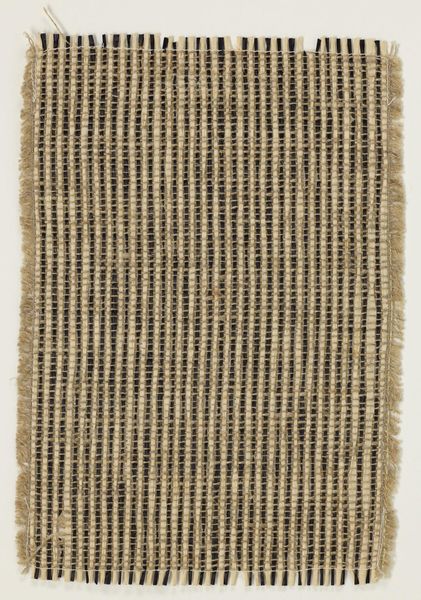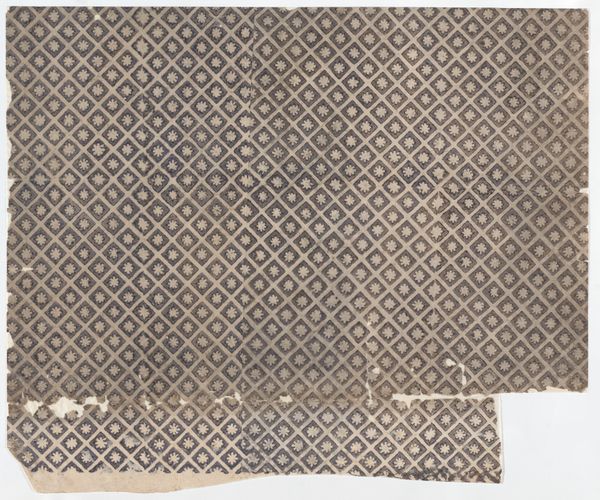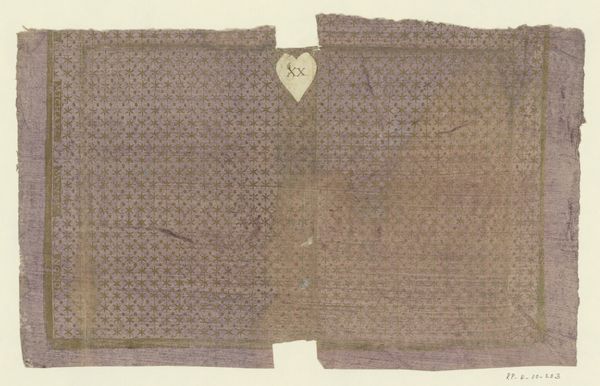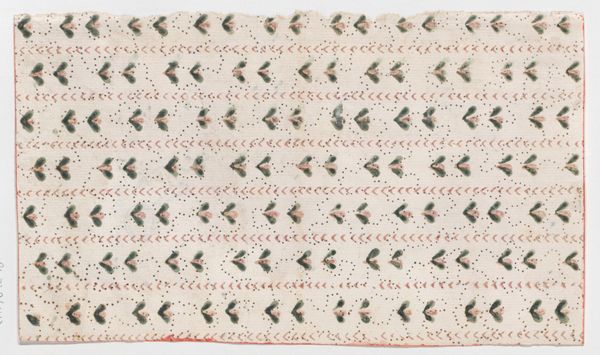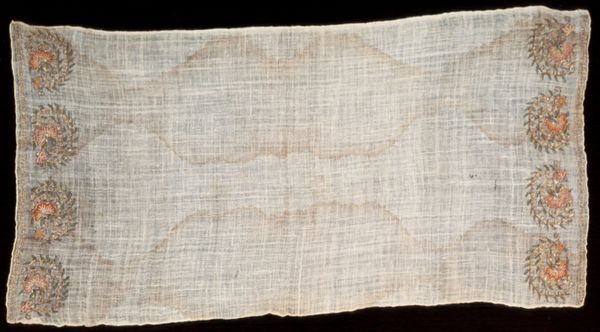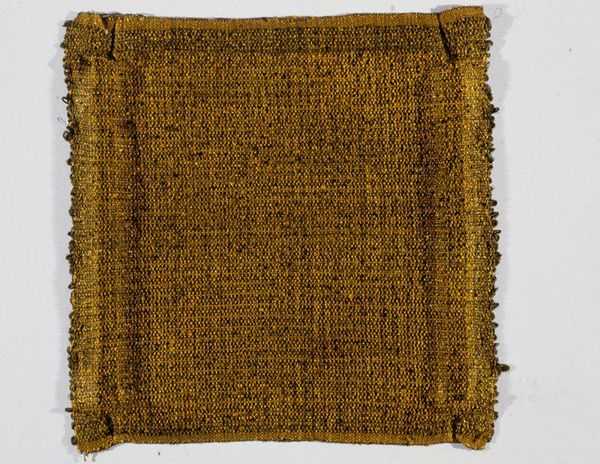
mixed-media, weaving, textile
#
mixed-media
#
weaving
#
textile
#
organic pattern
#
geometric
#
regular pattern
#
imprinted textile
Dimensions: height 90 mm, width 110 mm, thickness 40 mm
Copyright: Rijks Museum: Open Domain
Curator: This delicately woven textile covers an artifact entitled "Fotoalbum met diverse foto's zomer 1933", part of the Wachenheimer family collection, dating possibly from 1933-1937. What are your initial impressions? Editor: I'm immediately struck by the material—it looks like something both intimate and carefully crafted. The evenness of the weave, that pale, rosy hue… it hints at the domestic labor, perhaps female, that went into its creation. Curator: Absolutely. Examining this piece within the context of 1930s Germany, particularly the story of the Wachenheimer family, invites considerations about identity and displacement. The meticulousness of the textile cover might suggest a protective gesture, an attempt to safeguard memories during a period of immense precarity for Jewish families. Editor: I see that protection too. Mixed media pieces like this blur the boundaries between utility and art. Considering it as textile art asks what kind of statement this anonymous person might have intended to make with these materials and method of production, especially if she was unable to practice any of her trade work during this period. Curator: Precisely! The regular, geometric pattern could symbolize attempts to maintain order and normalcy within lives rapidly becoming defined by chaos and persecution. There’s also the possibility of reading the subtle irregularities in the weave as quiet acts of resistance, a disruption of prescribed roles, particularly for women in that historical moment. Editor: Thinking about the process, the weaving itself: was it made in-house, purchased? Who was the author of this? I also have to wonder about the source of the materials. The texture suggests a natural fiber. Its fragility seems a very pointed choice when so much labor went into its crafting. This object testifies to how much could be held in textile and album formats. Curator: Yes, and the album would hold photographs—records of community and connection perhaps under threat. Its intimacy would represent personal memories and lives. It becomes charged, infused with cultural weight, political resonance, especially now within this collection. Editor: Seeing that interplay between materiality, function, and historical narrative allows us to move past aesthetic judgement. Instead we might value the resourcefulness and determination required to create beauty in the face of erasure. Curator: Indeed. Analyzing such artifacts, positioned amidst collective historical trauma, helps in promoting mindful reflection. Editor: These seemingly mundane things gain powerful status when considering labor and historical making visible the stories woven in their texture.
Comments
No comments
Be the first to comment and join the conversation on the ultimate creative platform.
